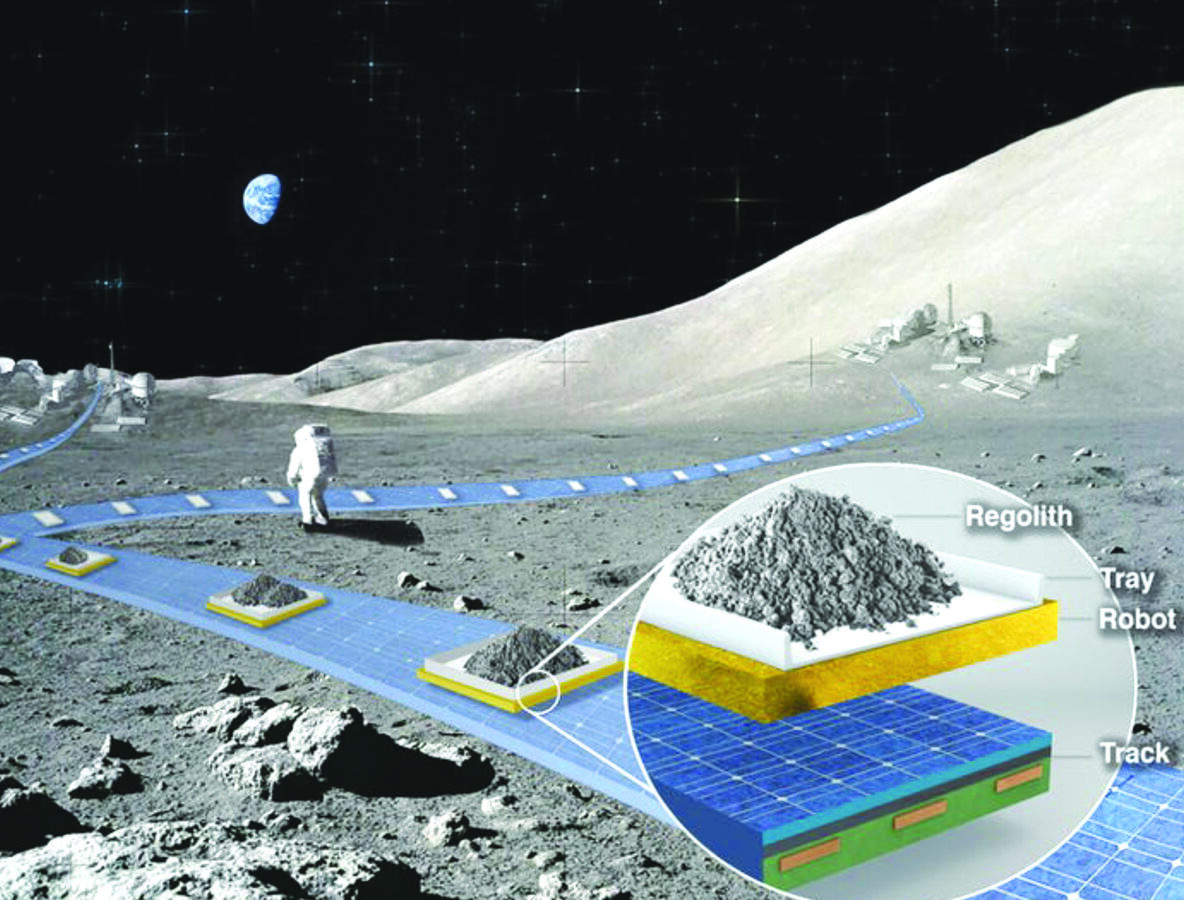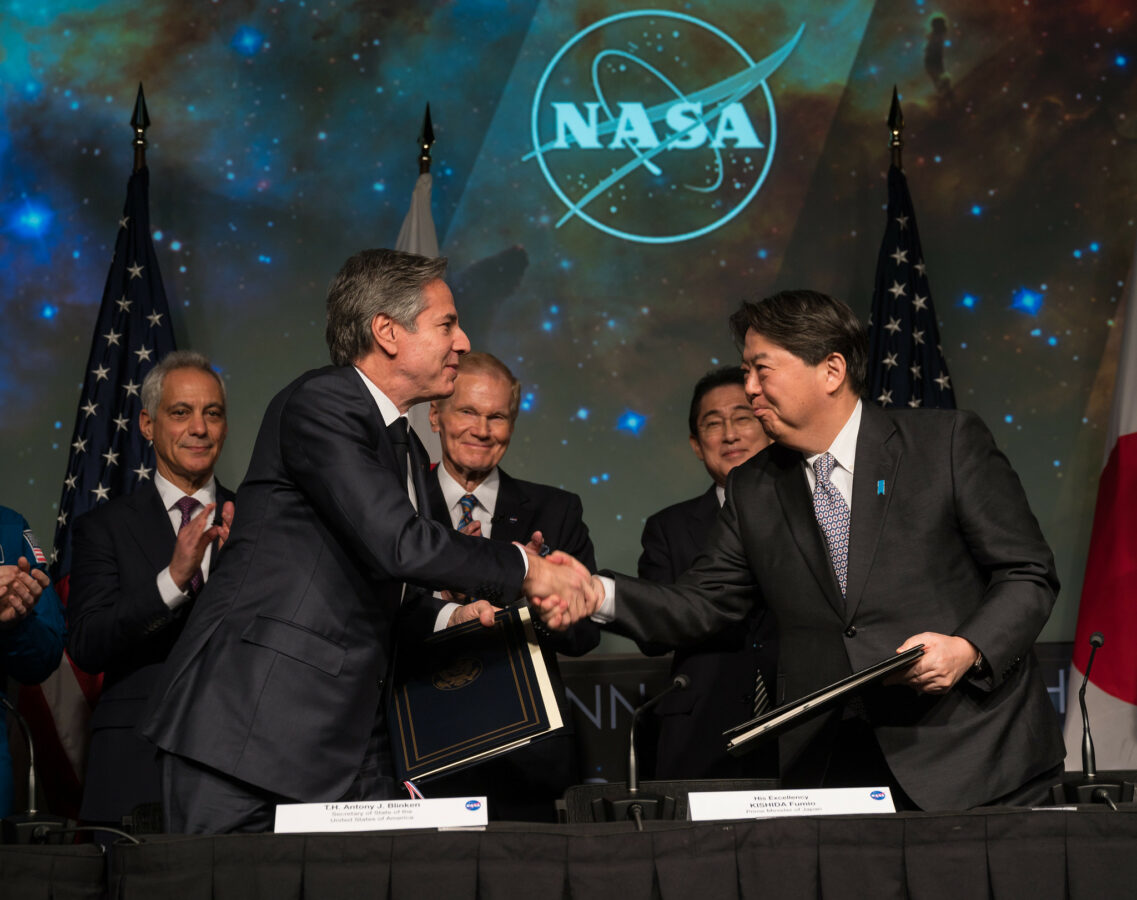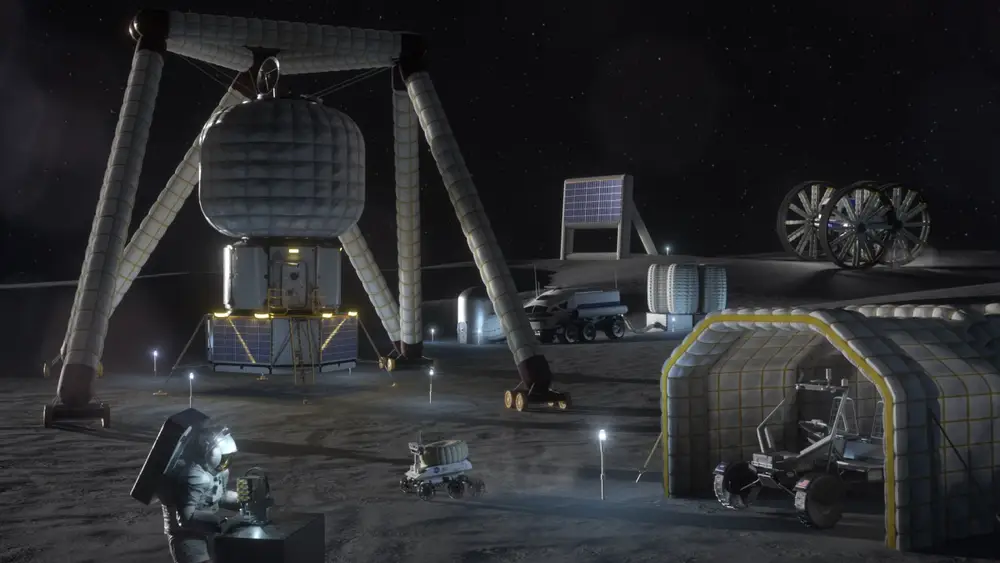by Garth Meyer
For untold generations, man has looked up at the moon in wonder.
Soon man may look up and wonder, “How is the economy up there?”
Northrop Grumman, in a new endeavor with DARPA (U.S. Defense Advanced Research Projects Agency) is studying how to build a railroad on the moon.
The train would haul lunar soil and extracted metals, even ice for drinking water, or to separate its hydrogen to power rockets to Mars.
“Supporting mining on the moon,” is how Steven Floyd, Redondo Beach Northrop Grumman program manager, described the project, part of an international plan for a “lunar economy” by 2035.
The scale and length of the railroad has yet to be determined.
“From tens, to potentially hundreds of kilometers,” Floyd said.
The seven-month probe is led by Northrop Grumman’s Redondo Beach space sector, with help from other branches of the company.
“This is a concept study,” Floyd said. “Looking at potential designs, processes to be used, and (means of) construction… All commercial uses. More will be disclosed, but we can’t reveal exactly what, at this point.”
The DARPA contract asks Northrop Grumman to determine what resources and interfaces would best be used to build a lunar rail network; to estimate costs, logistical and technological risks, identify prototypes and demonstrate and analyze a concept design and its architecture.
Also, how to build and operate the rail system using robotics; from grading, track placement and alignment to maintenance, repair and inspection.
To build a railroad on the moon, materials would largely have to be transported from Earth.
“Exactly how, is one aspect of the study,” Floyd said.
$170 billion market
Mineral deposits on the moon include silicon (making up 20% of moon dirt), rare earth metals used in products such as phones and hybrid car batteries, and titanium and aluminum.
Mined materials could be taken to Earth, or elsewhere.
“Wherever that (commercial mining company) would like to use it,” Floyd said. “Beyond the moon, Earth or somewhere else on the moon.”
Helium in the moon’s atmosphere could be used in fusion reactors built on the lunar surface.
According to PriceWaterhouseCoopers, by 2040, a lunar economy could amount to a $170 billion market.
“(Our) envisioned lunar architecture is not intended to support human exploration or scientific experimentation that does not have a commercial value,” said a DARPA spokesman.

Founded in 1958 after the Soviets launched Sputnik, DARPA’s earlier projects include the Saturn V rocket that first took humans to the moon.
Today’s lunar architecture study was announced last August, with 14 companies chosen to complete it.
“This has the potential to upend how the civil space community thinks about spurring widespread commercial activity on and around the moon within the next 10 years,” said Dr. Michael “Orbit” Nayak, program manager in DARPA’s Strategic Technology Office. “(Participants) include companies both big and small, domestic and international, (for) advancing quickly towards our goal: a self-sustaining, monetizable, commercially owned-and-operated lunar infrastructure.”
Other contracts for the DARPA project focus on power on the moon, communications, navigation, robotics, mining, mobility and construction.
Logistics
Issues facing a lunar railroad include how to manage an unforgiving landscape.
NASA has previously said that abrasive moon dust may ruin tracks and transporters. An earlier NASA project looked into a concept called FLOAT — a magnetic line in which levitating robots move cargo on electromagnetic tracks.
NASA concluded that it could be done, but needed further study.
It is unclear if Northrop Grumman will pick up this concept or pursue other means.
The company presents its work to DARPA in June.
Northrop Grumman, with its long history of space projects, already has a vehicle running cargo into space.
“Cygnus” is a small pod-like delivery craft that NASA has employed on a Commercial Resupply Services contract for 10 years, hauling more than 138,000 pounds of supplies, equipment and science experiments to astronauts at the International Space Station.
Cygnus crafts are taken into space today by the SpaceX Falcon 9 rocket. In January, Cygnus completed its 20th resupply mission.
“With a decade of experience in (space) cargo and logistics services, Northrop Grumman will continue supporting missions on the International Space Station and future civil and commercial exploration,” said Cyrus Dhalla, Redondo Beach vice president and general manager, tactical space systems.
The farther humans go into space, the more they will need to make things with local materials. NASA’s Lunar Surface Innovation Initiative aims to develop ways to use moon resources to excavate ground, build structures, and produce necessary water, fuel and supplies.
World focus
The current DARPA project is part of an international push towards the moon.
In Japan, researchers have presented a design for an interplanetary transportation system – the Hexatrack – that would take people on a “bullet train” to the moon in 15-meter wide hexagonal-shaped capsules.
The Japanese have also proposed “The Glass,” a 100-by-400 meter enclosed cylinder built on the moon – spinning to produce artificial gravity – with green space inside (for farming), public transportation and bodies of water.

As much as 2.9 billion metric tons of water is thought to be accessible on the moon from ice in its divots. The Cabeus Crater, by the south pole, has been confirmed to be full of ice.
China aims to have a permanent moon base open by 2030, and NASA has its own plan.
The Artemis program began two years ago with a goal to establish U.S. astronauts on the moon and Mars, “setting the groundwork for commercial exploitation of the solar system.”
No people have visited the moon since 1972, where no permanent structures exist.
NASA’s Artemis project, as a whole, aims to “learn how to live and work on another world as we prepare for human missions to Mars. We will collaborate with commercial and international partners and establish the first long-term presence on the moon.”
Artemis includes NASA’s Gateway craft, a small, multi-purpose outpost space station orbiting the moon to support surface missions, and act as a staging ground for deeper space exploration, such as man’s first missions to Mars.
Gateway’s launch is planned for as early as next year.
Commercial start
The commercial angle to the moon accelerated in 2019, when NASA announced a directive to further open the International Space Station for commercial use.
It was a marked shift from NASA’s earlier operating procedures, which now extends to the moon.
“This means a really brand new way that business is done in space,” said Gary Jordan, host of “Houston, We Have a Podcast” – the official podcast of NASA’s Johnson Space Center – in a 2019 episode. “… But why do this at all? Well, NASA’s going full speed ahead to make a landing of the first woman and the next man on the moon a possibility. And developing a robust economy in low-Earth orbit, or basically creating a space in space, for companies to succeed, is a good way to make that happen… The idea here is not to make money or reduce cost, just to enable this to happen.”

Northrop Grumman and the 13 other companies’ work for DARPA may lead to more of it in the future.
A previous Northrop Grumman federal study turned into the James Webb Space Telescope.
“(DARPA’s) investment in key developmental research keeps our technology at the forefront of next generation solutions,” said Chris Adams, Northrop Grumman vice president and general manager, strategic space systems. “With our proven experience in the integration of complex systems and commercialized autonomous services, we will continue to create lasting change for a sustainable space ecosystem.” ER











